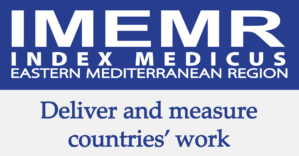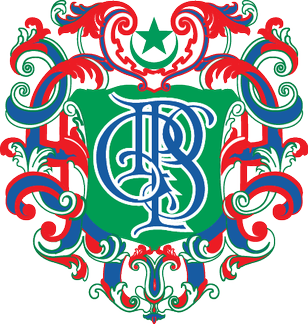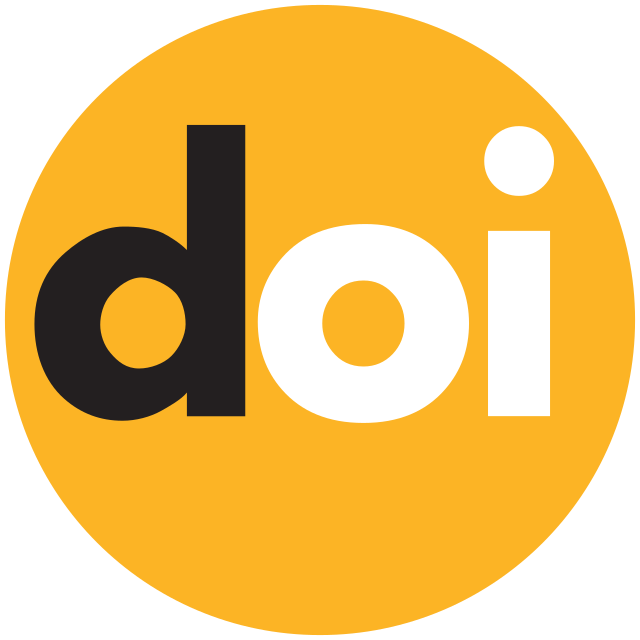Frequency of Thyroid Disorders in a Tertiary Care Hospital of Lahore, Pakistan
DOI:
https://doi.org/10.53685/jshmdc.v4i1.153Keywords:
Frequency, Thyroid dysfunction, Hypothyroidism, Hyperthyroidism, Thyroid profileAbstract
Background: Two powerful hormones are produced by thyroid gland, thyroxine (T4) and triiodothyronine (T3). These hormones control all metabolic processes and influence oxygen consumption in nearly all tissues of the body.
Objective: To determine the frequency of various thyroid disorders and association of thyroid disorders with age.
Methods: A retrospective descriptive study was conducted at Chemical Pathology and Immunology department, of a tertiary care hospital Lahore, Pakistan from October 2020 to April 2021. Reports of thyroid function test (TFT) of patients from 1st October 2020 to 31st December 2020 were included. Thyroid profile includes three parameters i.e. thyroid stimulating hormone (TSH), free T3 and free T4. Frequency of thyroid disorders was determined according to age and sex. Chi-square was used to determine association between age-groups and vice versa.
Results: Among 239 thyroid profiles of patients, 146 (61%) were found to be within normal range, whereas thyroid profile of 93 (38.9%) patients was disturbed, and they had various thyroid disorders. Frequency of thyroid disorders were significantly associated with age (p value=0.03). Among the patients with disturbed thyroid profile TSH was low in 14 (15.1%) patients and high in 57 (61.30%).
Conclusion: More than one-third of the suspected patients were found to have thyroid disorder. Thyroid disorders were significantly associated with age. Thyroid dysfunction was more common among female patients and presentation of hypothyroidism was more common among after 30 years of age
References
Ajlouni KM, Khawaja N, El- Khateeb M, Batieha A, Farahid O. The prevalence of thyroid dysfunction in Jordan: a national population-based survey. BMC Endocr Disord. 2022; 22:253. doi:10.1186/s12902-0 2 2-01166-5.
Vanderpump MP. The epidemiology of thyroid disease. Br Med Bull. 2011; 99: 39-51. doi:10.1093/bmb/ldr030. DOI: https://doi.org/10.1093/bmb/ldr030
Gupta P, Raizada N, Giri S, Sharma AK, Goyal S, Jain N, et al. Goiter frequency and thyroid autoimmunity in school children of Delhi. Indian J. Endocrinol. Metab. 2020; 24(2): 202-205. doi:10.4103%2Fijem.IJEM_ 645_19. DOI: https://doi.org/10.4103/ijem.IJEM_645_19
Silva SM, Carvalho A, Lopes-Pereira M, Fernandes V. Subclinical Hypothyroidism on the Elderly. Acta Med Port. 2018; 31: 766-773. doi:10.20344/amp.10991. DOI: https://doi.org/10.20344/amp.10991
Chiovato L, Magri F, Carlé A. Hypothyroidism in context: where we’ve been and where we’re going. Adv Ther. 2019; 36: 47-58. doi:10.1007%2Fs12325-01 9-01080-8. DOI: https://doi.org/10.1007/s12325-019-01080-8
Singer PA, Cooper DS, Levy EG, Ladenson PW, Braverman LE, et al. Treatment guidelines for patients with hyperthyroidism and hypothyroidism. Standards of Care Committee, American Thyroid Association. JAMA.1995; 273(10): 808-812. DOI: https://doi.org/10.1001/jama.273.10.808
Singer PA, Cooper DS, Levy EG, Ladenson PW, Braverman LE, Daniels G, et al. Serum TSH, T4, and thyroid antibodies in the United States population (1988 to 1994): National Health and Nutrition Examination Survey (NHANES III). J Clin Endocrinol Metab. 2002; 87(2): 489-499. doi:10.1210/jcem.87.2.8182. DOI: https://doi.org/10.1210/jc.87.2.489
Taylor PN, Albrecht D, Scholz A, Gutierrez-Buey G, Lazarus JH, Dayan CM, et al. Global epidemiology of hyperthyroidism and hypothyroidism. Nat Rev Endocrinol. 2018; 14(5): 301-316. doi:10.1038/nrendo.2018.18. DOI: https://doi.org/10.1038/nrendo.2018.18
Wouters HJCM, Slagter SN, Muller Kobold AC, Van der Klauw MM, Wolffenbuttel BHR. Epidemiology of thyroid disorders in the Lifelines Cohort Study (the Netherlands). PLoS One. 2020; 15(11): e0242795. doi:10.13 71/journal.pone.024 2795. DOI: https://doi.org/10.1371/journal.pone.0242795
Bhattarai AM, Pandeya D, Parajuli S, Pradhananga S. Pattern of Thyroid Illness in a Tertiary Hospital in Nepal. Med J Shree Birendra Hosp. 2022; 21(1): 93-97. doi:10.3 126/mjsbh.v21i1.39366. DOI: https://doi.org/10.3126/mjsbh.v21i1.39366
Ullah F, Ali SS, Tahir H. Clinical spectrum of thyroid disorders; An experience at a tertiary care hospital in Peshawar. Pak J Med Res. 2022; 61(2): 56-62.
Nafisa A, Ikram N, Khursheed S, Anjum R, Akhtar N. Epidemiologic profile of thyroid disorders in a Tertiary Care Hospital, a Five Years Analysis. J. Rawalpindi Med. 2021; 25(4): 466-471.doi:10.37939/jrmc.v25i4.1682. DOI: https://doi.org/10.37939/jrmc.v25i4.1682
Kinjo Y, Takasu N, Komiya I, Tomoyose T, Takara M, Kouki T, et al. Remission of Graves’ hyperthyroidism and A/G polymorphism at position 49 in exon 1 of cytotoxic T-lymphocyte-associated molecule-4 gene. J Clin Endocrinol Metab. 2002; 87(6):2593-2596. doi:10.1210/jc.87.6.2593. DOI: https://doi.org/10.1210/jcem.87.6.8612
Lee H, Hodi FS, Giobbie-Hurder A, Ott PA, Buchbinder EI, Haq R, et al. Characterization of thyroid disorders in patients receiving immune checkpoint inhibition therapy. immune checkpoint blockade and thyroid disorders. Cancer Immunol Res. 2017; 5(12): 1133-1140. doi:10.1158/2326-6066. DOI: https://doi.org/10.1158/2326-6066.CIR-17-0208
Rashad NM, Samir GM. Frequency, risks, and comorbidity of thyroid dysfunction: a cross-sectional epidemiological study. Egypt J Intern Med. 2019; 31(4): 635-641. doi:10.4103/ejim.ejim_22_19. DOI: https://doi.org/10.4103/ejim.ejim_22_19
Lamfon HA. Thyroid Disorders in Makkah, Saudi Arabia. Ozean J Appl Sci. 2008; 1(1): 52-58.
Menon VU, Sundaram KR, Unnikrishnan AG, Jayakumar RV, Nair V, Kumar H. High prevalence of undetected thyroid disorders in an iodine sufficient adult south Indian population. J Indian Med Assoc. 2009; 107(2): 72-77.
Ajlouni KM, Khawaja N, El-Khateeb M, Batieha A, Farahid O. The frequency of thyroid dysfunction in Jordan: a national population-based survey. BMC Endocrine Disorders. 2022; 22(1): 1-9. doi:10.1186/s12902-022-01166-5. DOI: https://doi.org/10.1186/s12902-022-01166-5
Shah N, Ursani TJ, Shah NA, Raza HM. Prevalence and manifestations of hypothyroidism among the population of Hyderabad, Sindh. Pure Appl Biol. 2021; 10(3): 668-675. doi:10.19045/bspab.2021.10 0069. DOI: https://doi.org/10.19045/bspab.2021-100069
Alqahtani SA. Frequency and characteristics of thyroid abnormalities and its association with anemia in ASIR region of Saudi Arabia: a cross-sectional study. Clin Pract. 2021; 11(3): 494-504. doi:10.3390/clinpract11030065. DOI: https://doi.org/10.3390/clinpract11030065
Iddah MA, Macharia BN. Autoimmune thyroid disorders. ISRN Endocrinol 2013. doi:10.1155/ 2013/509764. DOI: https://doi.org/10.1155/2013/509764
Madariaga GA, Palacios SS, Guillén-Grima F, Galofré JC. The incidence and frequency of thyroid dysfunction in Europe: a meta-analysis. J Clin Endocr Metab. 2014; 99(3): 923-931. doi:10.1210/jc.2013-2409. DOI: https://doi.org/10.1210/jc.2013-2409
Bashir H, Bhat MH, Farooq R, Majid S, Shoib S, Hamid R, et al. Comparison of hematological parameters in untreated and treated subclinical hypothyroidism and primary hypothyroidism patients. Med J Islam Repub Iran. 2012; 26(4): 172-178.
Aljabri KS, Alnasser IM, Facharatz BS, Bokhari SA, Alshareef MA, Khan PM. The frequency of hypothyroidism in Saudi community-based hospital: A retrospective single-center study. Trends Diabetes Metab. 2019; 2(1): 1-4. doi:10.15761/TDM.1000107 DOI: https://doi.org/10.15761/TDM.1000107
Ahmad J, Hussain A, Humayun L, Azhar MA, Zafarullah F, Ullah I, et al. Thyroid dysfunction and vitamin D deficiency among females of Punjab, Pakistan; A Cross-sectional analysis. Adv Life Sci. 2022; 9(1): 75-79.
Bukhari SI, Ali G, Memom MY, Sandeelo N, Alvi H, Talib A, et al. Prevalence and predictors of thyroid dysfunction amongst patients with Type 2 diabetes mellitus in Pakistan. J Family Med Prim Care. 2022; 11(6): 2739-2743. doi:10.4103/jfmpc.jfmpc_ 2106_21. DOI: https://doi.org/10.4103/jfmpc.jfmpc_2106_21
Wahid RA, Naseem M, Kakar A, Zafarullah, Khan N,et al. Subclinical hypo and hyperthyroidism is prevalent both in Pakistani and Afghani Population of Quetta City-Pakistan. Sch Int J Tradit Complement Med. 2020; 3(3): 55-61. doi:10.36348/sijtcm. 2020.v03i03.003 DOI: https://doi.org/10.36348/sijtcm.2020.v03i03.003
Downloads
Published
How to Cite
Issue
Section
License
Copyright (c) 2023 Muhammad Zubair, Zaineb Hameed, Hira tahir, Saira Farhat, Tahseen Kazmi, Noor Shahid

This work is licensed under a Creative Commons Attribution-NonCommercial 4.0 International License.
You are free to:
- Share — copy and redistribute the material in any medium or format
- Adapt — remix, transform, and build upon the material
- The licensor cannot revoke these freedoms as long as you follow the license terms.
Under the following terms:
-
Attribution — You must give appropriate credit, provide a link to the license, and indicate if changes were made. You may do so in any reasonable manner, but not in any way that suggests the licensor endorses you or your use.
-
Non Commercial — You may not use the material for commercial purposes.
-
No additional restrictions — You may not apply legal terms or technological measures that legally restrict others from doing anything the license permits.




















